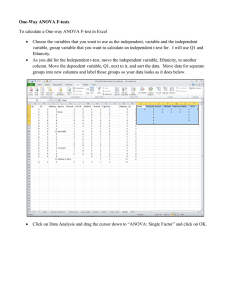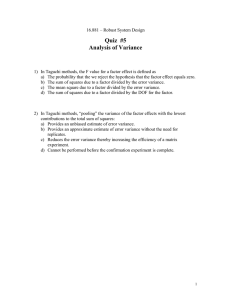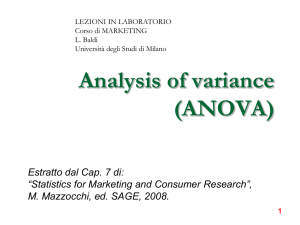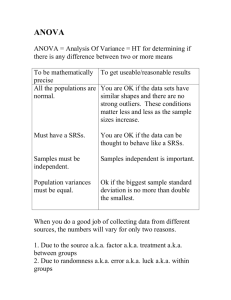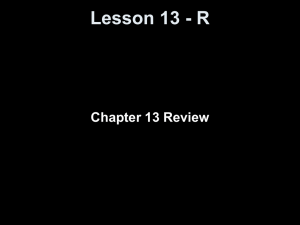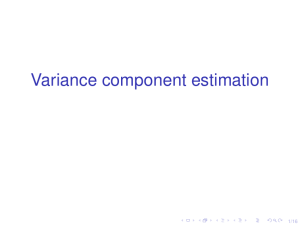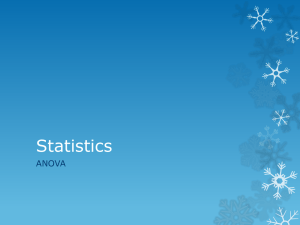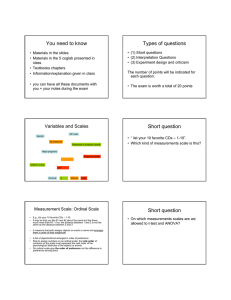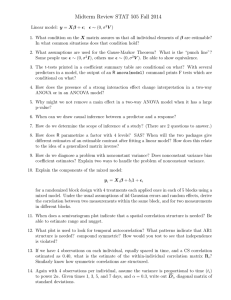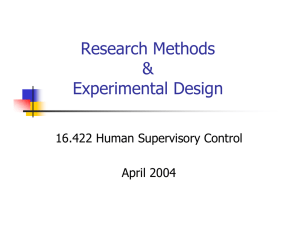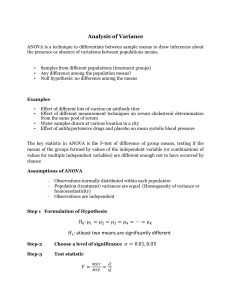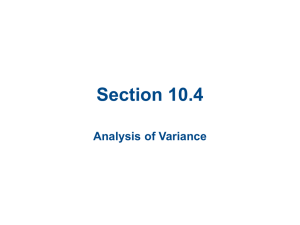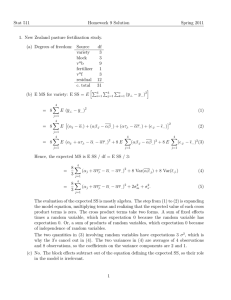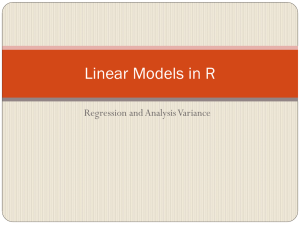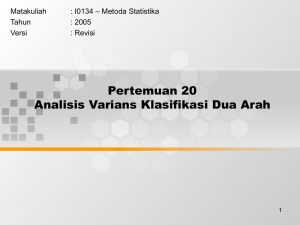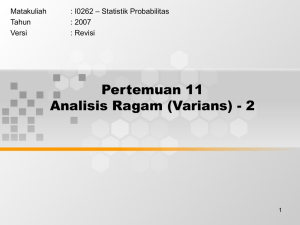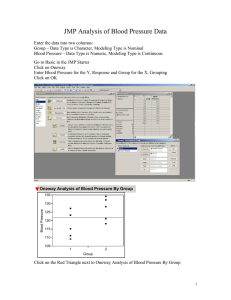Comparing Many Means
advertisement
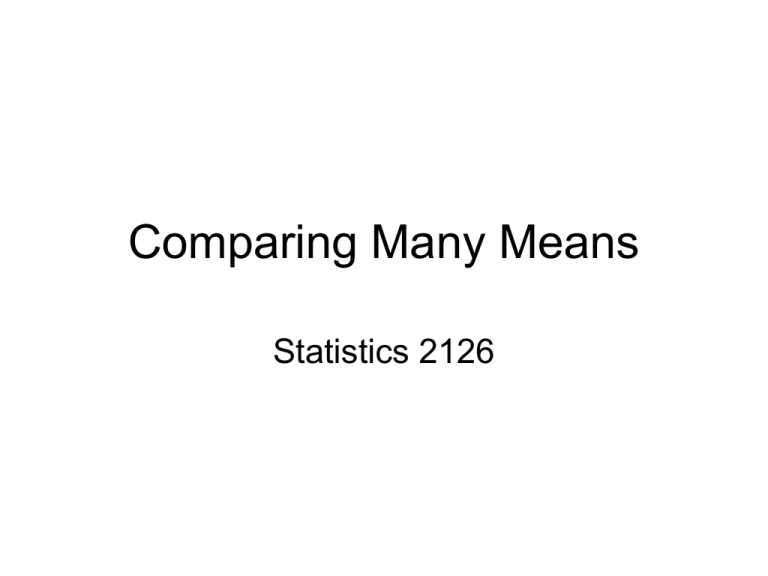
Comparing Many Means Statistics 2126 Introduction • We have talked about comparing two means • You know, like is group 1 different from group 2 • So you do a 2 sample t test, or perhaps in special cases a dependent sample t test and you find out the answer However… • What if we had a situation where we had more than 2 groups, say 4 groups • How many t tests would you have to do? • 1v2 • 1v3 • 1v4 • 2v3 • 2v4 • 3v4 • Ok so that is a lot, what would it do to your Type I error rate? Consider… • As noted the alpha level would increase, which would mean you would have to decrease it • So you lose power • Plus what about the overall pattern of differences? • Is the pattern of differences different than chance? What do we need? • Beer, lots of beer.. • But before that we need a statistic that compares the overall amount of variation with the variation that you would expect due to chance (i.e., subject differences) • The question is, did this pattern of differences come about simply due to chance variation? The hypotheses • H0 : μ1 = μ2 = μ3 =…= μk • Ha : at least two means differ • Now think about this, we will look at two measures of variation, overall variance vs. individual differences, how would we compare them? How indeed… • Use a ratio of the two • Between group variation / within group variation • If the variation due to groups was simply by change what would this ratio equal? • 1 • If the groups differ it would be > 1 This ratio is called… • The F ratio • F is for Fisher • So we can use variance estimates to see if group means differ, cool eh? • E(F) = 1 Pretty simple • We divide between group variation by within group variation • This is called analysis of variance or ANOVA • Any score of any individual is made up of between group variation and within group variation How do we calculate this? • We get sums of squares for between and within groups and divide by their degrees of freedom • Then we divide MSBG / MSWG • Gives us the F ratio which we compare to a critical value for F ANOVA summary table Source df SS Between Groups Within Groups Total k-1 (x x i MS G )2 N-K (x x ) N-1 i 2 SSBG k 1 SSWG N K F MSBG MSWG The test itself • Compare the obtained F value to the critical value • The Critical value will have two sets of df, one for the numerator and one for the denominator An example Group 2 20 Group 3 15 Group 4 15 Standard 5 deviation 4 6 5 n 10 10 10 Mean Group 1 10 10 SSBG = 50 SSWG = 918 ANOVA Summary Table sv df SS MS F Between 3 groups 50 16.67 .65 Within Groups 36 918 25.5 TOTAL 39 968 Compare to critical value • • • • F(3,36) ~ F(3,30) = 2.92 Well our obtained value is less than this so We fail to reject H0 If we did reject the null we just know two means differ, not which two • Post hoc tests take care of this Assumptions • Normally distributed populations • SRS • Homogeneity of variance

